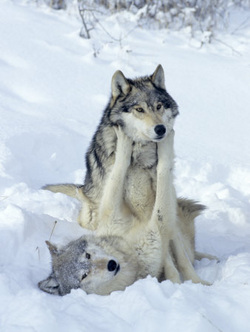
Wolves are a widely studied species in Yellowstone.
Because wolves were reintroduced to the park immediately after an absence of pretty much 80 years scientists spend a great deal of time studying the animals' distinctive behavior.
"Our understanding of wolves is vast because of decades of analysis all over the world" mentioned Tom Oliff chief of natural resources.
"The ability to oversee wolves inside the wild has been difficult plus the knowledge gained by means of direct observations of behavior is invaluable to understanding the species."
The ideal solution to study wolf movement is from the air.
The Raven's Eye View of Yellowstone can be a component of the Aerial Eyes project that is supported by Yellowstone Park Foundation (www.ypf.org) in cooperation with Canon U.S.A.
The Eyes on Yellowstone program is produced achievable by Canon it provides funding and digital technologies to support an array of park resource management and education programs.
Working with a Canon EOS 20D digital camera body with a 100-400EF lens (f 4.5-5.6) as a scientific tool wolf biologists Doug Smith and Dan Stahler are changing the way quantitative and qualitative wolf data are gathered and studied.
The scientists have documented numerous behavior-from hunting prey to raising pups to interacting with various species throughout the park.
The details even so remain tough to determine with the naked eye especially when employing the routine monitoring approach of aerial radio tracking from fixed-wing aircraft flying high overhead.
The digital equipment has helped revolutionize this research.
High-resolution digital photographs that can be taken various hundred feet above ground and later enhanced have in a short time opened new windows to studying wolf ecology and behavior.
"This is a key breakthrough for wolf study supplying first-of-its-kind outcomes" stated Stahler.
"Of particular value is the identification of individual wolves and the function every single plays in the pack even though engaged in different activities.
Determining the presence and quantity of pups in a litter or whether or not a certain member of the pack is still alive, can now be readily discernable through studying photographs taken with excellent digital camera equipment."
Digital photography has changed science, and it has allowed Yellowstone scientists to gather data never obtained by any other wolf study project. The mixture of digital imaging and enhanced lens quality are key scientific tools to assist study and recognize wolves.
A pack of wolves in Yellowstone is monitored by aircraft equipped with cameras.
 RSS Feed
RSS Feed